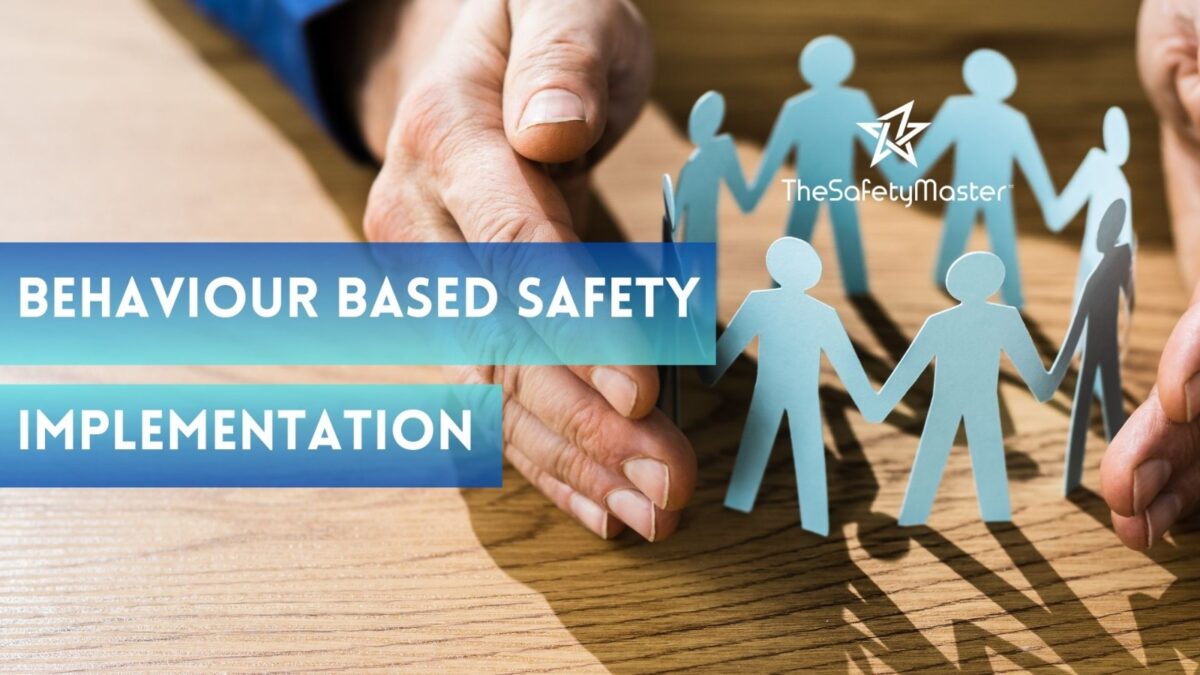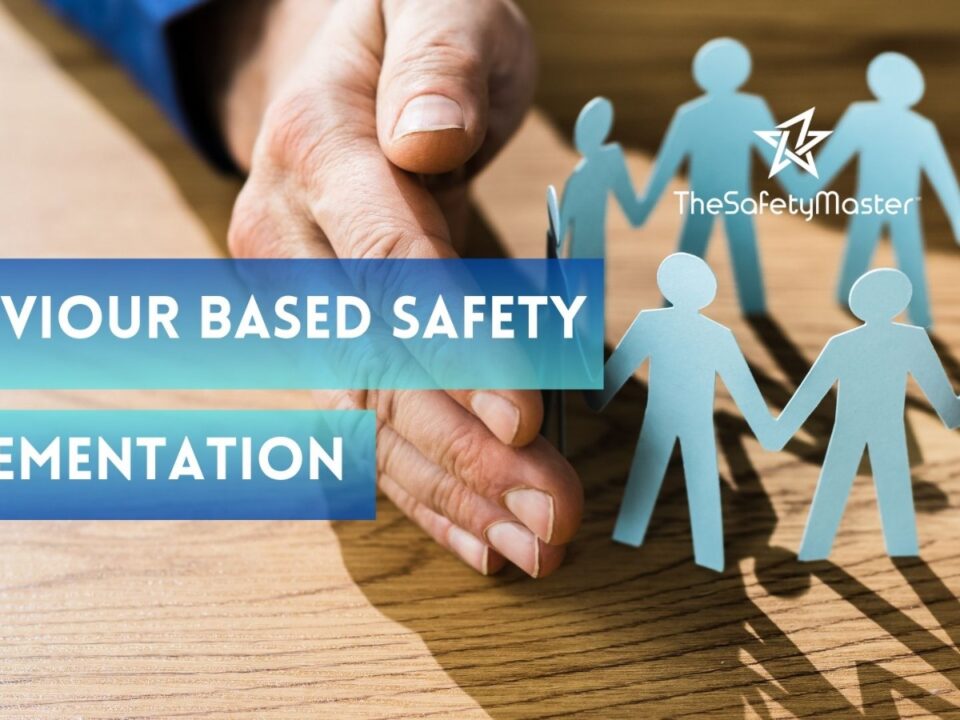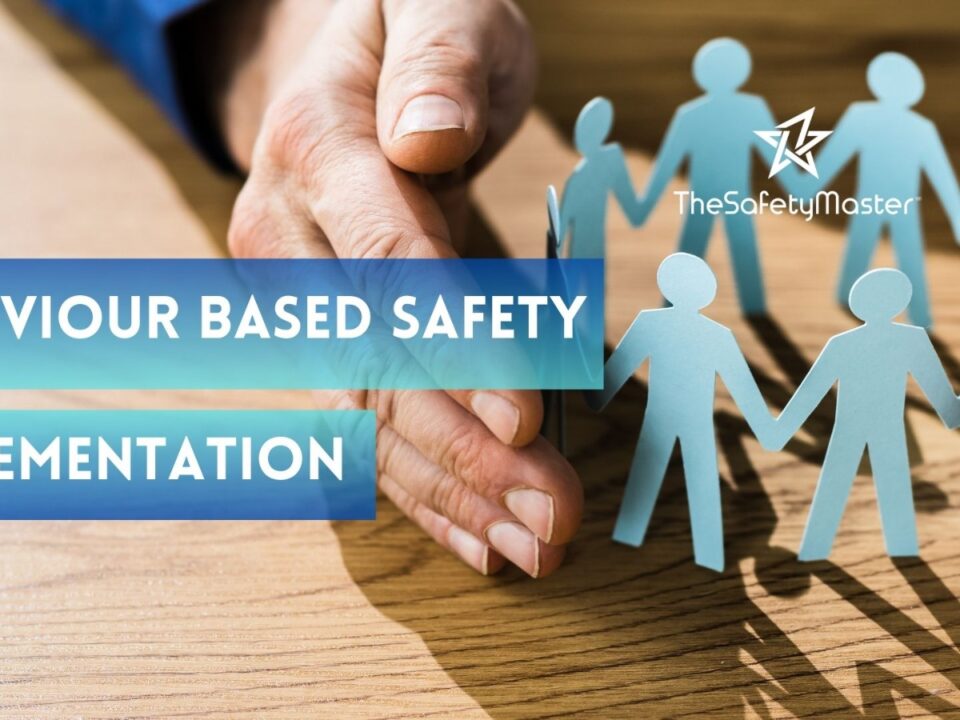Enhancing Worker Competence and Safety through Behaviour based Safety Management Implementation

The Power of Positive Reinforcement: Transforming Workplace Culture through Behaviour Enhancement
January 4, 2024
Ensuring Workplace Safety – A Comprehensive Guide to Fire Safety Audits In India Industries
January 6, 2024In this article, we delve into the critical aspects of enhancing worker competence and safety through the implementation of Behaviour Based Safety Management. In today’s rapidly evolving industrial landscape, ensuring a safe work environment is paramount. However, compliance with safety regulations alone is not enough. We will explore the fundamental problem faced by organizations – the human factor, and how Behaviour Based Safety Management effectively addresses this issue. Expect to gain a deeper understanding of the strategies and techniques employed, empowering your workforce to proactively identify and eliminate potential hazards. By the end, you’ll be equipped with invaluable knowledge to enhance worker competence and safety, making your organization a safer and more efficient place.
Introduction
Enhancing Worker Competence and Safety through Behaviour based Safety Management Implementation. Ensuring the competence and safety of workers is of paramount importance in any organization. Whether it is a construction site, a manufacturing facility, or an office environment, the well-being of employees should never be compromised. However, achieving optimal competence and safety standards requires more than just implementing traditional safety protocols. It calls for a proactive approach that focuses on understanding human behaviour and its impact on safety outcomes.
<p>In this article, we will delve into the concept of behaviour-based safety management and how it can revolutionize workplace safety. We will explore key elements that contribute to its successful implementation, such as conducting job hazard analyses, identifying unsafe behaviours, establishing safety goals, providing training programs, engaging employees, performing regular inspections and audits, and evaluating performance. By the end of this article, you will gain valuable insights that can be applied to enhance worker competence and elevate safety standards throughout your organization
Understanding Behaviour-Based Safety Management
Understanding Behaviour-Based Safety Management: In the realm of workplace safety, Behaviour-Based Safety Management (BBSM) stands as a comprehensive approach that aims to understand and influence the behaviours of employees. It recognizes that human behaviour plays a pivotal role in shaping workplace incidents and accidents. BBSM delves into the underlying causes behind unsafe actions or practices, emphasizing the identification and modification of these behaviours to enhance worker competence and safety.
At its core, BBSM is built on the foundation of behavioural psychology, which suggests that behaviour is influenced by external stimuli and consequences. By analysing employee actions in various work settings, BBSM seeks to identify patterns, triggers, and consequences associated with unsafe behaviour. This knowledge allows organizations to develop targeted interventions that promote safe practices.
By embracing BBSM principles, organizations can transform their safety culture from a reactive stance to a proactive one. Instead of simply responding to accidents after they occur, BBSM empowers employers and employees alike to identify potential hazards through observation and analysis. Implementing this approach instils a sense of collective responsibility for safety within the workforce while fostering an environment where workers are encouraged to share concerns openly without fear of retribution.
Ultimately, understanding behaviour-based safety management provides organizations with valuable insights into human behaviour within the workplace context. By acknowledging that individuals’ actions significantly impact their own well-being as well as those around them, companies can develop effective strategies aimed at enhancing worker competence and promoting a safer work environment for all.
The Importance of Worker Competence and Safety
The Importance of Worker Competence and Safety: Ensuring worker competence and safety is of paramount importance in any organization. A skilled and safe workforce not only enhances productivity but also creates a positive work environment where employees feel valued and supported. Workers who are competent in their roles possess the knowledge, skills, and abilities necessary to perform tasks effectively, reducing the risk of accidents or errors.
Worker safety goes beyond physical well-being; it encompasses psychological and emotional aspects as well. When employees feel safe in their work environment, they experience higher job satisfaction, leading to increased motivation and engagement. This positive atmosphere fosters teamwork, collaboration, and innovation, which are crucial for organizational success.
Investing in worker competence and safety demonstrates a commitment to employee welfare. It instils a sense of trust among workers that their employer cares about their well-being. Moreover, a safe workplace reduces absenteeism due to injuries or illnesses, resulting in lower healthcare costs for both the employer and employee.
By prioritizing worker competence and safety through behaviour-based safety management implementation, organizations can cultivate a culture where employees thrive professionally while feeling secure physically and mentally. This proactive approach not only protects workers from harm but also empowers them to contribute effectively towards achieving organizational objectives.
Key Elements of Behaviour-Based Safety Management
Key Elements of Behaviour-Based Safety Management Behaviour-based safety management is a proactive approach that focuses on understanding and modifying employee behaviours to enhance workplace safety. This effective strategy involves several key elements which, when implemented together, contribute to creating a safe and productive work environment.
Firstly, conducting a thorough Job Hazard Analysis (JHA) is essential. By identifying potential risks and hazards associated with specific job tasks, organizations can develop targeted strategies to control and mitigate those risks. This analysis enables employers to tailor their safety programs based on the unique needs of each job role, ensuring that employees are equipped with the necessary knowledge and skills to perform their duties safely.
Secondly, identifying and controlling unsafe behaviours plays a vital role in behaviour-based safety management. By observing employees’ actions and interactions within the workplace, organizations can identify patterns of behaviour that may put workers at risk. Through positive reinforcement techniques like recognition programs or incentives for safe practices, employers can encourage employees to adopt safer habits while discouraging risky behaviours.
Lastly, establishing clear safety goals and objectives provides a roadmap for achieving an accident-free workplace. These goals should be measurable, achievable, and aligned with the overall organizational mission. By setting targets for incident reduction or near-miss reporting rates, employers create a shared sense of purpose among workers and foster a culture of continuous improvement.
By incorporating these key elements into their safety management approach, organizations empower their workforce to take personal responsibility for their own well-being while creating an environment where everyone looks out for one another’s safety. This holistic approach not only reduces accidents but also boosts employee morale and productivity—a win-win situation that ultimately leads to improved business outcomes.
Conducting a Job Hazard Analysis
Conducting a Job Hazard Analysis: When it comes to ensuring worker competence and safety, conducting a comprehensive job hazard analysis is of paramount importance. This analytical process involves breaking down each task into its constituent steps, identifying potential hazards at each step, and assessing the associated risks. By scrutinizing the work environment, equipment, and procedures, organizations can proactively mitigate risks, prioritize safety measures, and foster a culture of prevention.
Through a meticulous job hazard analysis, companies gain valuable insights into potential hazards that may otherwise go unnoticed. This process enables them to identify specific tasks where worker competence plays a crucial role in mitigating risks. By prioritizing these tasks and providing comprehensive training programs focused on skill enhancement, organizations can empower their workforce to confidently address challenges with knowledge and expertise.
By embracing the job hazard analysis as an opportunity for growth rather than a mere compliance exercise or bureaucratic burden, organizations can create a positive work environment where employees feel valued and empowered. This approach not only enhances worker competence but also fosters a safety-conscious culture where everyone takes an active role in identifying and addressing potential hazards. Ultimately, this proactive approach ensures that workers are equipped with the necessary skills to navigate their responsibilities safely while fostering continuous improvement in occupational health and safety practices.
Identifying and Controlling Unsafe Behaviours
Recognizing and addressing unsafe behaviours is a pivotal step in ensuring worker competence and safety within an organization. By identifying these behaviours, organizations can proactively intervene to prevent accidents and create a culture of safety. One effective strategy is the implementation of observation programs, where trained personnel regularly monitor workers’ activities to identify deviations from safe practices.
Observation programs involve active engagement with employees, fostering a sense of accountability and collective responsibility. These programs encourage workers to become more aware of their own actions, promoting self-regulation in adhering to safe work practices. Additionally, by involving employees in the identification process, organizations empower them to take ownership of their safety performance.
To effectively control unsafe behaviours, it is crucial to establish clear protocols for corrective actions. Once unsafe behaviours are identified through observations or other reporting mechanisms, immediate feedback should be provided to the individuals involved. This feedback should focus on constructive guidance rather than blame or punishment, emphasizing the importance of safety and offering specific recommendations for improvement.
By prioritizing intervention over punishment, organizations can foster a positive environment that encourages open communication about safety concerns. This approach helps build trust between management and workers while creating opportunities for dialogue on enhancing safety practices collectively.
Overall, by actively identifying and controlling unsafe behaviours through observation programs and constructive feedback loops, organizations can take significant strides towards cultivating a safer working environment that promotes worker competence and well-being.
Establishing Safety Goals and Objectives
Establishing Safety Goals and Objectives: Setting clear and measurable safety goals and objectives is a crucial step in the successful implementation of behaviour-based safety management. These goals provide a roadmap for the organization to follow, ensuring that all efforts are directed towards achieving a safer work environment. By establishing specific targets, such as reducing the number of accidents or near-misses by a certain percentage within a specified timeframe, companies can create a sense of purpose and urgency.
Moreover, safety goals should align with the organization’s overall vision and values, reflecting its commitment to workers’ well-being. They should be ambitious yet realistic, challenging employees to continuously improve their safety performance while also inspiring them to strive for excellence. By instilling a sense of collective responsibility in employees, organizations can foster an optimistic culture where everyone feels empowered to contribute towards creating a safer workplace.
In addition to setting goals, it is important to establish clear objectives that outline the specific actions required to achieve those goals. Objectives could include implementing regular safety training programs, conducting thorough risk assessments across all departments, or improving communication channels regarding safety issues. These objectives provide employees with actionable steps they can take individually and collectively towards making the workplace safer. When workers see progress being made towards these objectives, it boosts morale and reinforces their belief in the organization’s commitment to their well-being.
Implementing Training and Education Programs
Implementing Training and Education Programs: To ensure the effective implementation of behaviour-based safety management, comprehensive training and education programs play a pivotal role. These programs aim to equip employees with the necessary knowledge and skills to identify potential hazards, make informed decisions, and act in a safe manner. Training sessions can cover a wide range of topics such as hazard recognition, proper use of personal protective equipment (PPE), emergency response procedures, and ergonomics.
By investing in robust training initiatives, organizations not only enhance worker competence but also foster a culture of safety. One creative approach is incorporating interactive simulations that allow employees to experience real-life scenarios in a controlled environment. This immersive learning experience promotes active engagement and critical thinking while ensuring that workers understand how their behaviours can contribute to overall safety performance.
Moreover, education programs should go beyond simply imparting knowledge; they should inspire employees to embrace safety as an integral part of their daily routines. Incorporating inspirational stories about individuals who have prioritized safety or highlighting success stories where accidents were prevented through proactive measures can instil a sense of ownership and enthusiasm among workers. By fostering a positive mind-set towards safety, organizations empower their workforce to take responsibility for their own well-being while actively contributing to creating a safer work environment for all
Promoting Employee Engagement and Participation
Promoting Employee Engagement and Participation: Engaging employees in the implementation of behaviour-based safety management is crucial for its success. By fostering a sense of ownership and responsibility, organizations can harness the collective knowledge and experience of their workforce to identify potential hazards and develop effective safety solutions. Encouraging active participation empowers employees to become safety advocates, making safety a shared commitment rather than a top-down directive.
To foster engagement, organizations can establish various channels for communication such as regular safety meetings, suggestion boxes, or even interactive online platforms. These avenues allow employees to voice their concerns, share best practices, and contribute ideas for improving workplace safety. By actively listening to employees’ insights and providing timely feedback on their suggestions, organizations demonstrate that they value their input and are committed to creating a safe work environment.
Moreover, instilling a positive safety culture is critical in promoting employee engagement. Recognizing and rewarding individuals or teams who prioritize safety not only reinforces desired behaviours but also encourages others to follow suit. Celebrating milestones achieved through collective efforts can further enhance motivation levels and inspire continuous improvement in all aspects of safety management. Ultimately, when employees feel valued as integral stakeholders in the organization’s safety journey, they become more invested in ensuring the well-being of themselves and their colleagues
Conducting Periodic Safety Inspections and Audits
Conducting Periodic Safety Inspections and Audits: Safety inspections and audits play a pivotal role in ensuring the effectiveness of behaviour-based safety management systems. Through regular assessments, organizations can identify potential hazards, evaluate existing control measures, and implement necessary improvements. These proactive measures not only minimize the risks to worker competence and safety but also foster a culture of continuous improvement within the workplace.
During inspections, trained personnel meticulously examine work areas, equipment, and processes to identify any deviations from established safety standards. By scrutinizing workplace conditions and practices, these audits serve as a powerful tool for preventing accidents and maintaining compliance with regulatory requirements. Furthermore, audits provide an opportunity for employees to actively participate in identifying potential hazards or suggesting safety enhancements, fostering a sense of ownership in creating a safe work environment.
When organizations prioritize periodic safety inspections and audits as part of their behaviour-based safety management approach, they demonstrate their commitment to worker well-being. This commitment not only instils confidence among employees but also promotes a positive work culture where everyone is encouraged to be vigilant about safety. By regularly evaluating and improving safety performance through inspections and audits, organizations can create an environment that empowers workers to perform at their best while feeling secure in their workplace surroundings.
Evaluating and Improving Safety Performance:
In order to maintain a robust and effective behaviour-based safety management system, it is crucial to continuously evaluate and improve safety performance within the organization. This entails gathering data, analysing trends, and identifying areas for enhancement. By diligently monitoring safety performance indicators, organizations can develop targeted interventions to mitigate risks and optimize worker competence. One key evaluation method is conducting regular safety audits. These comprehensive assessments assess the implementation of safety policies and procedures on the ground level. Through these audits, potential hazards can be identified, corrective actions can be implemented, and any deviations from established safety protocols can be rectified promptly. The data gathered from such audits serves as a roadmap for improvement efforts.
Another important aspect of evaluating performance is analysing incident reports. By carefully examining the causes of incidents or near-misses, organizations can identify patterns or recurring issues that require attention. This allows for proactive measures to be taken to prevent future occurrences. Furthermore, an open reporting culture should be fostered within the organization to encourage employees to report any potential hazards or unsafe behaviours without fear of reprisal.
Finally, implementing regular feedback mechanisms through employee surveys or focus groups provides valuable insights into worker perceptions of safety practices within the organization. This feedback helps identify gaps in understanding or training needs that may hinder optimal performance. By addressing these concerns proactively and involving workers in decision-making processes related to their own safety, organizations create a positive work environment that promotes continuous improvement in safety performance.
By dedicating resources towards evaluating and improving safety performance, organizations demonstrate their commitment to worker well-being while fostering a culture of continuous improvement
Measuring the Impact of Behaviour-Based Safety Management
Measuring the Impact of Behaviour-Based Safety Management: Fathoming the true effectiveness of a well-implemented Behaviour-Based Safety Management (BBSM) program requires diligent measurement and analysis. By quantifying safety outcomes with precision, organizations can gain invaluable insights into the program’s impact on worker competence and safety. One key metric to consider is the reduction in the frequency and severity of workplace accidents—a tangible measure that reflects the success of a robust BBSM approach.
Furthermore, assessing changes in employees’ attitudes towards safety provides an insightful glimpse into the program’s influence. By conducting surveys or interviews that explore workers’ perceptions, organizations can gauge whether a shift in mind-set has occurred. This transformation may manifest as increased hazard awareness, proactive safety interventions, and more open communication regarding potential risks. Such positive shifts affirm that BBSM is not merely a set of prescribed procedures but a dynamic catalyst for fostering behavioural change.
Another crucial aspect to evaluate is workforce engagement levels throughout the implementation of BBSM. Organizations can assess employee involvement by tracking participation rates in safety meetings, reporting unsafe behaviours or near-miss incidents, and actively contributing suggestions for improvement. Witnessing an upsurge in these activities signifies that workers have embraced their role as active agents of change, thereby cementing their commitment to enhancing competence and ensuring personal safety.
By meticulously examining these measurements and embracing continuous improvement strategies based on findings, organizations can optimize their BBSM initiatives over time. Harnessing data-driven insights empowers them to fine-tune training protocols, refine communication strategies, and further strengthen worker engagement—all aimed at cultivating a culture where competence flourishes hand-in-hand with unwavering dedication to safety
Conclusion
In conclusion, the implementation of behaviour-based safety management holds tremendous potential in enhancing worker competence and ensuring their safety. By focusing on identifying and controlling unsafe behaviours, establishing clear safety goals, providing comprehensive training programs, and engaging employees through participation, organizations can create a culture of safety that becomes ingrained in every aspect of their operations. With regular inspections and audits to evaluate and improve safety performance, companies can continually strive for excellence in protecting their workforce. As a result, workers will feel empowered, valued, and motivated to prioritize their own well-being while contributing to the overall success of the organization. By investing in behaviour-based safety management, companies not only enhance their bottom line but also create a positive work environment where employees thrive both personally and professionally.




